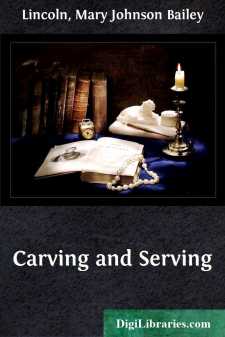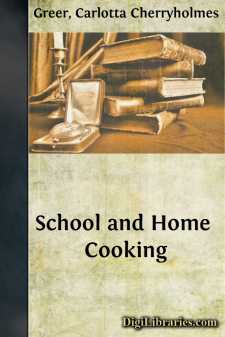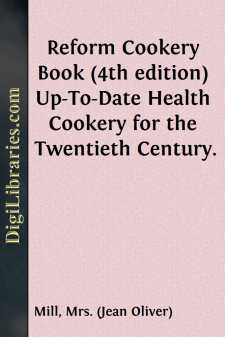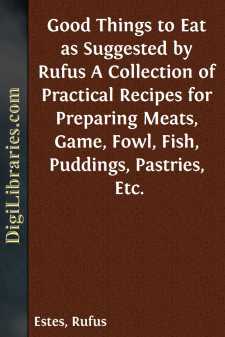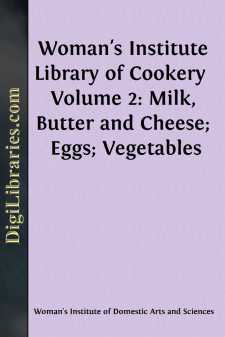Cooking
- General 70
- History 1
- Reference 10
- Regional & Ethnic 3
- Vegetarian 10
Cooking Books
Sort by:
by:
Unknown
PENNSYLVANIA Dutch COOKERY In 1683 the Plain Sects began to arrive in William Penn’s Colony seeking a land of peace and plenty. They were a mixed people; Moravians from Bohemia and Moravia, Mennonites from Switzerland and Holland, the Amish, the Dunkards, the Schwenkfelds, and the French Huguenots. After the lean years of clearing the land and developing their farms they established the peace and...
more...
GENERAL DIRECTIONS. "Do you teach your pupils how to carve?" "Please give us a lecture on carving; my husband says he will come if you will." I have been so frequently addressed in this way that I have decided to publish a manual on the Art of Carving. Instruction in this art cannot be given at a lecture with any profit to my pupils or satisfaction to myself. One cannot learn by simply...
more...
PREFACE School and Home Cooking is a text which can be placed in the hands of the pupils and used by them as a guide both in the school and home. Its use eliminates note-taking (which in reality is dictation) and thus saves much time. The psychological method of education, which treats first of material within the experience of the beginner and with that as a basis develops new material to meet the...
more...
SOUPS. The following directions will be found generally applicable, so that there will be no need to repeat the several details each time. Seasonings are not specified, as these are a matter of individual taste and circumstance. Some from considerations of health or otherwise are forbidden the use of salt. In such cases a little sugar will help to bring out the flavour of the vegetables, but unless all...
more...
by:
Cora Moore
THE BUGBEAR OF AMERICAN COOKERY—MONOTONY It is as strange as it is true that with the supplies that have lately proved sufficient to feed a world to draw upon the chief trouble with American cookery is its monotony. The American cook has a wider variety of foods at his command than any other in the world, yet in the average home how rarely is it that the palate is surprised with a flavor that...
more...
HINTS FOR MEALTIME How often do we hear women exclaim, "Oh dear, what shall I have for the next meal?" This little book will aid you in answering that troublesome question. The recipes are carefully selected and we hope you will find them helpful. More important to you than the question of food is that of health. Therefore, in this book we show you many letters from women who have received great...
more...
Foreword No apologies are offered for this book. In fact, we rather like it. Many years have been spent in gathering this information, and naught is written in malice, nor through favoritism, our expressions of opinion being unbiased by favor or compensation. We have made our own investigation and given our own ideas. That our opinion does not coincide with that of others does not concern us in the...
more...
by:
Rufus Estes
SKETCH OF MY LIFE I was born in Murray County, Tennessee, in 1857, a slave. I was given the name of my master, D. J. Estes, who owned my mother's family, consisting of seven boys and two girls, I being the youngest of the family. After the war broke out all the male slaves in the neighborhood for miles around ran off and joined the "Yankees." This left us little folks to bear the burdens....
more...
MILK IN THE DIET 1. As is well understood, milk is the liquid that is secreted by the mammary glands of female mammals for the nourishment of their young. The word milk as it is commonly used, however, refers to cow's milk, because such milk is employed to a greater extent as human food than the milk from any other animal. Cow's milk in its perfectly fresh raw state is a yellowish-white,...
more...
I Remember Cheese Cheese market day in a town in the north of Holland. All the cheese-fanciers are out, thumping the cannon-ball Edams and the millstone Goudas with their bare red knuckles, plugging in with a hollow steel tool for samples. In Holland the business of judging a crumb of cheese has been taken with great seriousness for centuries. The abracadabra is comparable to that of the wine-taster or...
more...



